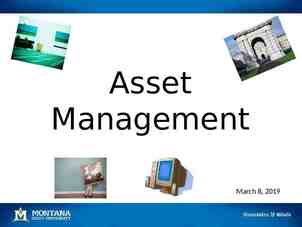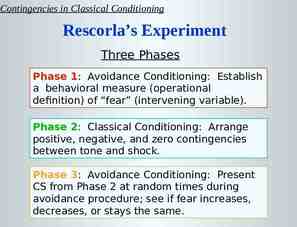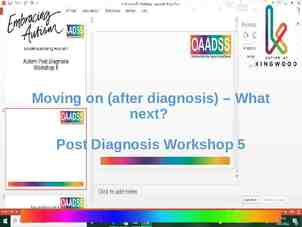Hazard Communication presented by Melissa Crowder
35 Slides1,010.00 KB

Hazard Communication presented by Melissa Crowder

Session Objectives You will be able to: Understand the hazards of chemicals in your work area Interpret information on warning labels Understand material safety data sheets (MSDSs) Protect yourself Respond to emergencies Where to find UF Written Plan template Departmental responsibilities Business & Legal Reports, Inc. 0507

Hazcom vs. Lab Safety Hazcom is for non-lab employees encountering chemicals Shop chemicals Farm crew – pesticides, etc. Lab Safety/Chemical Hygiene Plan Lab chemicals Business & Legal Reports, Inc. 0507

Encounters with Chemicals We encounter chemicals almost every day Filling your vehicle with gasoline Cleaning the house Applying pesticides or insecticides Using solvents or acids at work Many chemicals can cause injury or illness Business & Legal Reports, Inc. 0507

Encounters with Chemicals (cont.) 30 million workers exposed or potentially exposed to 650,000 chemicals annually 20,000 incidences of exposure annually result in lost work days Business & Legal Reports, Inc. 0507

Hazard Communication Law A written hazard communication program A list of hazardous chemicals MSDSs Training Business & Legal Reports, Inc. 0507

Hazard Communication Law (cont.) You must be able to: Read labels and MSDSs Follow employer instructions and warnings Identify hazards before starting a job Participate in training Business & Legal Reports, Inc. 0507

Solids Dust and powder Fumes and fibers Liquids Fluids and mists Gases and vapors Business & Legal Reports, Inc. 0507 Image Credit: State of WA-WISHA Services Types of Chemicals

Physical Hazards Flammable Explosive Reactive Business & Legal Reports, Inc. 0507

Health Hazards Short-term effects include headache, dizziness, skin irritation. Long-term effects may be liver or lung damage or even cancer. Some examples of health hazards are: Corrosive Toxic Business & Legal Reports, Inc. 0507

How Chemicals Enter Your Body Skin absorption and eye contact Inhalation Image Credit: State of WA-WISHA Services Business & Legal Reports, Inc. 0507

How Chemicals Enter Your Body (cont.) Swallowing (eating contaminated food) Cut, puncture, or injection Business & Legal Reports, Inc. 0507

How Chemicals Affect Your Body Dosage Acute effects Chronic effects Business & Legal Reports, Inc. 0507

Exposure Limits Permissible Exposure Limits (PEL) Concentrations expressed in parts per million (ppm) or milligrams or cubic meter Threshold limit value (TLV) TLV-Time Weighted Average (TLV-TWA) TLV-Short-Term Exposure Limit (TLVSTEL) TLV-Ceiling Limit (TLV-C) Business & Legal Reports, Inc. 0507

What’s Wrong Here? Welder assigned to clean screens Given a cleaner, brush, and rag Identify the hazard(s) Business & Legal Reports, Inc. 0507

Check the Label Chemical identity Manufacturer contact information Physical/health hazards Special handling PPE recommendations First aid, fire response, and spill cleanup Business & Legal Reports, Inc. 0507

What’s on the Label The product label shows: The name of the product The manufacturer Miscellaneous information Hazard warning List of hazardous ingredients Business & Legal Reports, Inc. 0507 Image Credit: National Institutes of Health

NFPA Labeling Systems Blue Health hazard Red Flammability Yellow Reactivity White Other hazards Scale: 0 (No Hazard) to 4 (Extreme Hazard) Business & Legal Reports, Inc. 0507

All secondary containers must be labeled Identification of the substance Specific warning statement Nonhazardous materials should also be labeled to avoid confusion. Business & Legal Reports, Inc. 0507

Information Resource: The MSDS It is a written description of a hazardous chemical It describes the risks, precautions, and remedies to exposure Readily available to you Read the MSDS before working with a chemical Business & Legal Reports, Inc. 0507

MSDS (cont.) Chemical and manufacturer identity Hazardous ingredients Physical and chemical properties Fire, explosion, and reactivity Business & Legal Reports, Inc. 0507

MSDS (cont.) Health hazards Routes of entry Exposure levels (PEL or TLV) Symptoms of exposure First-aid and emergency information Business & Legal Reports, Inc. 0507

MSDS (cont.) PPE Safe handling and storage Spills and leaks Compliance issues Business & Legal Reports, Inc. 0507

PPE: Physical Protection Protect yourself: Face shields Gloves Foot protection Head protection Aprons or full-body suits Business & Legal Reports, Inc. 0507

PPE: Respiratory Protection During installation of engineering controls During maintenance Non-routine tasks Emergency response When other controls are inadequate When other controls are not feasible Business & Legal Reports, Inc. 0507

Emergency Procedures Eyes: Flush with water for 15 minutes Skin: Wash with soap and water, remove contaminated clothing Inhalation: Move to fresh air Swallowing: Get emergency medical assistance Business & Legal Reports, Inc. 0507

Emergency Response to Chemical Spills or Leaks Evacuate the area Notify a supervisor or the emergency response team Stay away Business & Legal Reports, Inc. 0507

What Should be Done? Ordered to clean the screens with cleaners, brush, and rag No chemical information No PPE Business & Legal Reports, Inc. 0507

Key Points to Remember Identify chemical hazards Read labels and MSDSs Follow warnings and instructions, or ask your supervisor if in doubt Use the correct PPE Practice sensible, safe work habits Learn emergency procedures Business & Legal Reports, Inc. 0507

Hazard Communication Program Elements Written Program - Site Specific Material Safety Data Sheets (MSDS) Chemical Inventory Labeling Employee Training Business & Legal Reports, Inc. 0507

Department’s Responsibility Who and How Should I Train? All personnel using hazardous substances. Training for large or small groups Training one-on-one Whatever works best for your audience. Business & Legal Reports, Inc. 0507

When should I train? Within 30 days of today then: Should be done at the time of employees initial assignment before handling hazardous materials Should be done when new chemicals are introduced and when MSDS have been revised Business & Legal Reports, Inc. 0507

What should I cover? Also listed on our website http://www.ehs.ufl.edu/programs/os/hazcom/ Review the following with personnel The Hazard Communication Program and Site Specific Information The physical characteristics and health effects of each hazardous chemical used. The location of the MSDS and how to use them. The proper and safe handling of chemicals. Methods used to detect chemicals in the workplace. Methods to protect against exposure, including PPE and engineering controls. Appropriate emergency procedures. The chemical labeling system. How to obtain and use hazard information. Business & Legal Reports, Inc. 0507

Written Program Must be site specific. Tells how and where to access information. Tells who is responsible. Gives emergency information. Tells how information is conveyed and documented. Customize template to achieve what works best for your group. Chemical Inventory Maintained by shops or departments. by product name Business & Legal Reports, Inc. 0507

What must I do now? Complete site specific Hazard Communication Plan Complete chemical inventory Obtain MSDS and make them accessible. Train current employees and then again as new hazards are introduced or anticipated to be used. Note: you do not need to actually train all materials you have but the training must be done before each of those materials is used. Train new employees before they work with hazardous materials. Maintain training records. Business & Legal Reports, Inc. 0507






